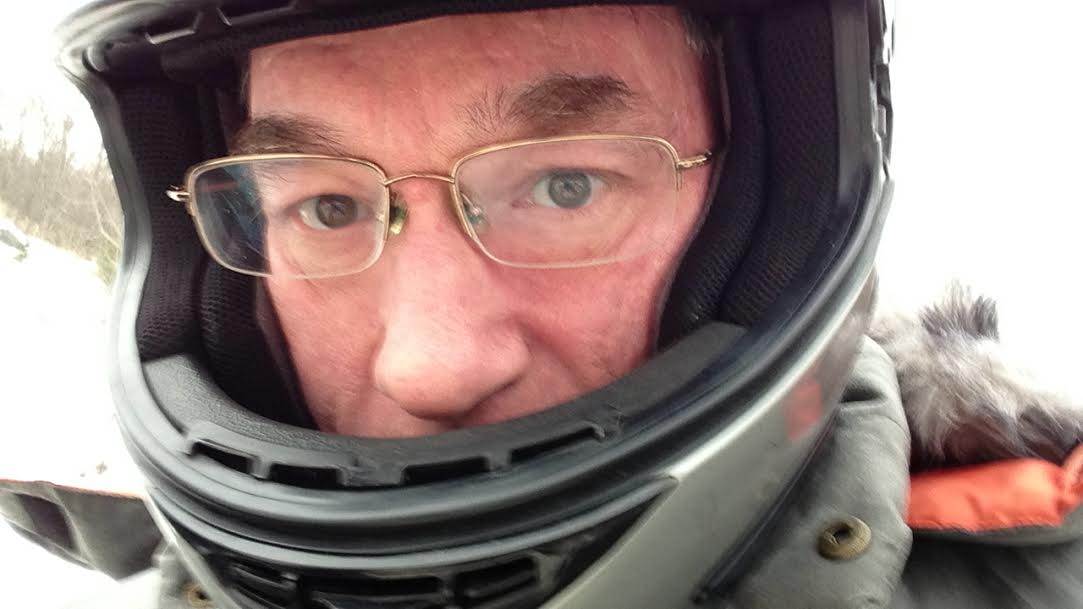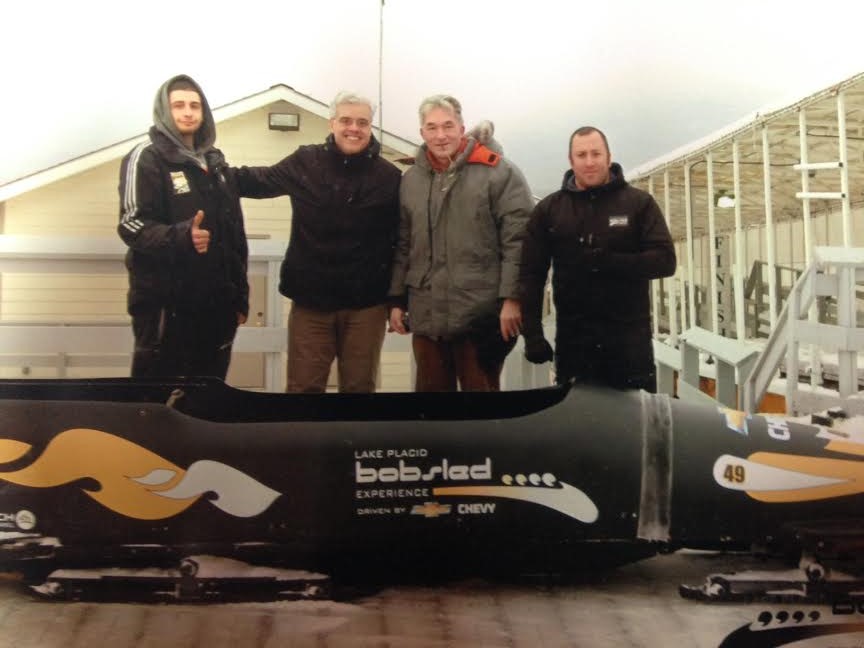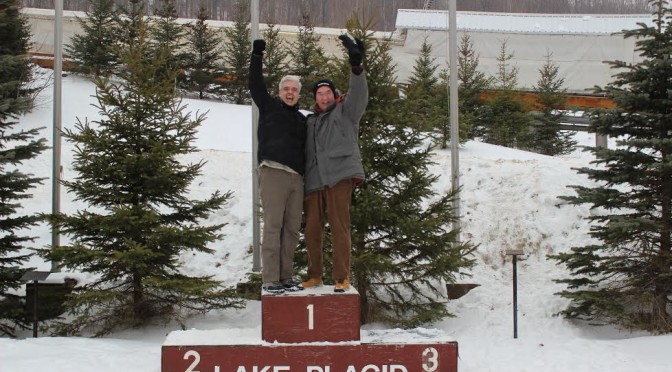I have never engaged in a sport or activity that required the use of a helmet.
So it was an unnatural feeling to have this gray sphere snugly nested around my noggin as Pedro and I prepared to hurtle ourselves on the bobsled run at Mount Van Hoevenberg in Lake Placid, N.Y.

Thanks to the New York Olympic Regional Development Authority, which runs the venues from the 1932 and 1980 winter Olympics, the public can enjoy the “Bobsled Experience,” an abbreviated 10-turn, half-mile course, compared to the full-length 20-turn course.
Trust me, this was no simulator.
Imagine four people seated — their legs extended around each other in V-formations — in a 500-pound Fiberglas bathtub.
Now imagine taking that bathtub and its passengers and hurtling it at speeds in excess of 60 mph (80-plus mph if you are competing in the Olympics) along a twisty water park slide coated in ice.
The experience is a bit like getting into a cab in New York City at 3 a.m. barreling down First Avenue with all the traffic lights green.
Except bobsledding is less dangerous.
I was relieved when the ride started out gently enough. I thought, “Oh, this isn’t too bad.”
But faster than you can say “Jamaican bobsled team,” the sled started to pick up speed.
Things became a blur of white. I strained to sit forward as the driver had instructed, but one of the forces that works on your body — aerodynamic drag — kept pushing me back.
I would no sooner start to collect my thoughts when …
WHAM!
We’d accelerate through a turn at teeth-rattling speeds. Sledders can experience g-forces from 1g on straightaways up to 4g or 5g on tight, high-speed bends, according to Mark Denny, author of “Gliding for Gold: The Physics of Winter Sports.”
And to top it off, we were sideways to the track, like a spider hanging off a wall.
Jon Lundin, public relations coordinator for the Olympic Regional Development Authority, explained it this way:
“As the sled maneuvers its way down the twisting icy chute and reaches speeds of between 55-60 mph, participants will feel the pull of the sled as it climbs halfway up the curve, with some curves as high as eight to 10 feet.”
The curves have such innocent-sounding names: “Shady.” “The Labyrinth.” “The Heart.”
Really, they should be renamed: “The Vomitron.” “What Was That?!” and “Oh. My. God.”
Just as I was thinking I could not bear another turn, we skidded to a slowdown.
Forty-eight seconds. (Watch a video of our exciting run.)
That was it.
Our wives greeted us like conquering heroes, and Pedro and I enjoyed a celebratory Kodak moment on an Olympic medal podium.
With each chest-thumping retelling of our experience — for the benefit of our wives — we amped up in increments our alleged speed.
So when we started telling our tale, we said we went in excess of 100 mph (big exaggeration), but by the time the weekend was winding down, we were bragging of having gone 512.5 mph (whopper of a lie).
We’re even convinced that we came away from the ride younger since we were going so fast that time reversed itself (pants on fire).
So now when you watch Olympic bobsledders go for the gold, you can recall the efforts of Pedro and I going for the aluminum.
At 516.7 mph.









